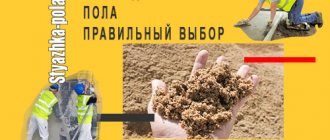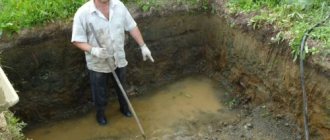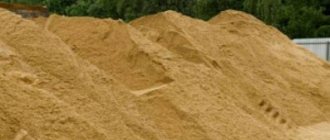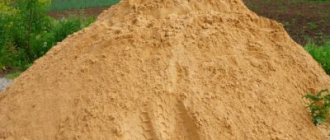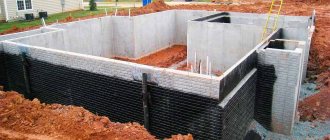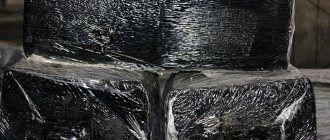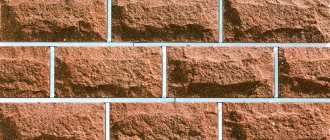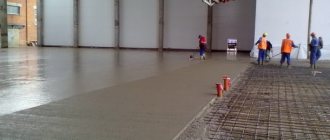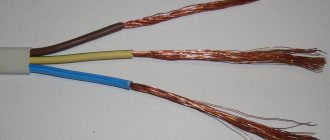What sand is used in construction
Sand is used in the manufacture of concrete and plaster mortars as an inert filler that does not react chemically with other components. Concrete is one of the main materials in construction, so sand is mined everywhere and on a huge scale. It is conventionally divided into natural and artificial. There may be different deposits in one area, which allows you to choose which sand to buy for the foundation.
Natural sands
They are called large masses of small mineral grains lying at the bottom of rivers, lakes and seas, as well as dune, mountain and gully loose sedimentary rocks. They differ in composition, size and shape of grains:
- Sea peso is very fine, with fraction sizes up to 1 mm. It contains various impurities, shells consisting mainly of limestone, so it must be washed before use.
Extraction of sea sand Source piterpesok.ru
- Sand mined from the bottom of large lakes has similar properties and characteristics . It contains even more mineral and organic impurities, which must be eliminated in order to obtain high-quality concrete.
- River sand , unlike sea and lake sand, is constantly washed by the current, so it is the cleanest, with a very small amount of clay, limestone and organic impurities. Its grain size is larger, but the shape, like the previous species, is smooth and round, which is explained by its long-term presence in water.
- Mountain and gully deposits are mined using open-pit mining, which is why they are called quarry deposits. This extraction method is the cheapest, and therefore the material from the quarries has the lowest price. But its quality for use in concrete mixtures leaves much to be desired due to the large number of impurities. They are removed by hydromechanical washing, obtaining washed material, or sifted through a whole system of sieves, removing organic inclusions and stones.
Development of a sand quarry Source onf.ru
If you choose what kind of sand is needed for the foundation - river or quarry, then the quality composition of river sand is better - it is cleaner and does not require additional sifting or washing. But quarry sand grains have an angular rather than a smooth shape, which is preferable for foundation mortars, since they are more durable. Therefore, treated quarry sand is often preferred to river sand, which even after washing is much cheaper.
Artificial sand
Natural deposits of sand are not available everywhere, so in some areas there is a shortage of this material. In addition, its mass production harms the environment. Therefore, it is allowed to use sand of artificial origin in construction, although it can be a stretch to call it such. The fact is that this product is obtained from hard rocks by crushing them. Most often these are screenings obtained during the production of crushed stone.
Screenings from crushed stone crushing Source kraftbeton.ru
Whether artificial sand is suitable for concrete work depends on the rock that has been crushed, the size of the grains, their strength, abrasion, dust content and other characteristics determined by laboratory tests. As a rule, it is used for the production of decorative solutions and the creation of textured surfaces for facades.
However, high-quality screenings obtained from suitable rocks using centrifugal impact crushers often have all the necessary properties and even improve the strength of concrete due to the rough cuboid-shaped grains that adhere well to the solution. This form is much preferable to that of polished and rounded grains of river sand.
Foundation sand: what does it look like?
If we consider it from the point of view of geology, sand is a very fine type of sedimentary rock, represented by fragments of various minerals, mined by open pit mining or produced by industrial enterprises. At their core, they are very small pebbles of various shapes and sizes - resulting from natural or artificial processes. There are several types of sand on the market, each of which has its own unique properties and is suitable for various construction processes:
- Career is the most common and cheapest option. It is mined in open pits and contains a lot of impurities from clay, lime and earth, which must be taken into account when choosing this type of sand;
- River - a cleaner option, mined from the bottom of rivers - is most suitable for the construction of foundations and use in branded monolithic concrete. By the way, the famous skyscrapers of Dubai were built using river sand from Europe;
- Mineral - obtained by processing various rocks - that is, these are finely ground remains of granite, crushed stone, limestone, marble and other varieties. It is almost never used in concrete mixtures, as it has certain limitations on adhesion and strength - but is suitable for finishing;
- Marine - it is mined from the bottom of the seas and further purified. This sand is considered the highest quality and most expensive, is used in branded concrete and has increased strength characteristics, since it does not contain organic matter or harmful clay inclusions.
Based on the above, what sand is needed for the foundation must be determined at the design and development stage of the construction process. Our company’s professional specialists will offer several options that will optimally compare in quality and cost. Although country cottages are built for long-term use, it is not always rational to use very expensive materials, since for such small volumes the quality of different types of sand is almost identical. Moreover, if the project involves the use of ready-made concrete mixtures from the manufacturer, who himself monitors the quality of the sand used in monolithic concrete.
How to choose
If there are several deposits in your area, you can choose which sand is best for a foundation cushion or for pouring a monolithic foundation without complex and very expensive laboratory tests.
Advice! In any case, ask the seller or supplier for documents on the material, which must reflect its origin, composition, density, humidity, grain size modulus.
Passport for construction sand Source www.tg-stroy.ru
What to pay attention to and by what criteria to choose a material depends on its purpose and the type of structure being built.
High-quality composition
In order for the concrete base to be strong, foreign impurities must not get into the solution, which over time begin to rot, react with cement and cause destructive changes in the monolith. And they get there precisely with sand, which can contain both various mineral inclusions and organic matter in the form of plant residues.
For example, the high clay content in bulk aggregate is not critical for masonry mortars - it even makes them more plastic and workable. But when choosing which sand is best for the foundation, it is necessary that it be no more than 5%.
If you doubt the quality of sand, you can conduct your own basic test. You need to pour it into a glass container to about a third of the volume, add water, mix well and let it sit for an hour. If after this time the water above the sand becomes clear, it can be used to build a foundation. If it remains cloudy, with dirt floating on the surface, then such filler is discarded.
Choosing sand for a pillow
Many people don’t think about which sand is best. Therefore, they take the one nearby, or the one brought by a “highly experienced foreman”. However, I’ll say right away that its parameters affect the quality of the bedding. It will be a shame when the wrong choice affects the durability of the structure, and it will no longer be possible to replace it.
So, pay attention to the appearance:
Coarse sand fraction
a) Large faction . Suitable material should not be very fine. This sand is good for the beach, but not for the foundation. Large particles measuring 4-5 mm in size are considered ideal. In general, the larger the grain, the more reliable it is. If you have gravelly sand, feel free to take it. As a last resort, use river sand with a fraction of at least 3 mm.
Why? The larger the grain size, the better it is compacted and the less susceptible to moisture.
b) No impurities . The purity of the material, or rather its uniformity, matters. If stones and organic impurities are found in the sand, then this “magic mixture” can affect the quality properties. Admixtures of clay and silt will be especially harmful. Clay is useful in mortar for laying a stove, and silt is useful in a garden for plants.
Why? Their presence leads to moisture retention, deterioration of density and increased mobility of the pillow. Also, never use wet sand.
Laying geotextiles on a sand bed
I would like to draw your attention to a practical material that is low cost and extremely effective. We are talking about geotextiles. The material appeared relatively recently, but its performance qualities have ensured wide demand among builders. As a familiar foreman said: “this thing for waterproofing and foundations is just the thing!” I will try to reveal the essence of his laconic phrase.
Geotextiles - a tear-resistant material made from polypropylene threads and has the appearance of a fine-mesh lattice. It does not rot, is not afraid of temperature changes, has excellent permeability but does not absorb water, is resistant to chemicals and is unloved by rodents.
The main application in construction is drainage and reinforcement.
Since our topic is related to the arrangement of a pillow under the foundation, I will briefly talk about the “usefulness” of the material specifically for this purpose.
Video description
You can clearly observe the experiment to determine the purity of sand in the video:
See also: Catalog of companies that specialize in the construction of foundations and facade materials
Fraction size
When determining the suitability of a material for a particular type of work, they use such a concept as particle size modulus. It shows the size of the sand grains, which largely affects the properties of the mortar:
- For example, very fine, thin and very fine sand with fraction sizes of up to 0.7 mm, 1 mm and 1.5 mm, respectively, are used to prepare finishing plaster mortars that form a smooth surface.
- When deciding what kind of sand is needed for a cushion under the foundation, preference is given to coarse-grained sand, with a grain size of 3-3.5 mm.
- A mixture of small (1.5-2 mm), medium (2-2.5 mm) and large (up to 3 mm) fractions is ideal for foundation concrete. Large particles provide good adhesion, and small particles fill all the voids.
Grain size can be determined visually using a regular ruler Source 1nerudnyi.ru
Density
High-quality material with a size module suitable for the construction of a foundation should have a density of about 1.5 tons per cubic meter. This characteristic must be indicated in the accompanying documentation. It is also possible to calculate it yourself.
To do this, you need to find out the weight of empty (m1) and loaded (m) transport by checking its weighing at the entrance and exit from the shipping area. The difference is divided by the number of cubes (V) of the purchased material and its density is obtained.
Formula for determining the density of sand Source www.vashdom.ru
Sand fractions
Depending on the size of the grains of sand, the following types of fractions are distinguished:
- Very thin contains grains of sand up to 0.7 mm , but due to the low fraction it is unsuitable for foundations. The foundation based on it will be as fragile as possible.
- Fine contains sand grains ranging in size from 0.7 to 1 mm . This sand is not dense, so it is also not suitable for foundation mortar. Typically, fine sand is used to pour concrete.
- Very fine contains grains of sand up to one and a half mm , but is still not suitable for pouring a foundation, since the strength will still not be optimal.
- Fine contains grains of sand ranging in size from one and a half to 2 mm . And again, it is not suitable for pouring a foundation due to the high cost of cement for it.
- The middle one contains sand grains ranging in size from 2 to 2.5 mm and is ideal for pouring foundations due to its strength and high performance properties.
- Large contains grains of sand up to 3 mm and is intended for the production of high-quality and expensive grades of concrete. This sand is very expensive.
- Extra-fine sand contains sand grains up to 3.5 mm and is used to make sand cushions designed to increase the strength of the base and distribute the load evenly across all corners.
Pouring the foundation assumes that the edges of the medium sand you choose should be sharp. It is the sharp edges of the grains of sand that increase the performance properties of the solution and make it as durable as possible.
Return to content
Video description
The following video clearly demonstrates this method of determining density:
Humidity
The moisture content of the material is important for determining the proportions of the concrete mixture during its production. Recommended proportions for formulations of different brands imply that it is no more than 5%. If the humidity is higher, it is necessary to reduce the amount of water for mixing the solution. In addition, when purchasing wet material, you overpay for the missing volume.
The volume of water for mixing the solution depends on the humidity of the sand Source i2.wp.com
This indicator can also be determined at home by calcining 1 kilogram of the bulk mixture over a fire in a metal container for 30 minutes and weighing it again at the end of the procedure. The difference between the initial weight and the weight after calcination is divided by 100 to obtain the percentage of moisture.
For example, if after drying 0.85 kg of bulk mass remains, then its initial moisture content is 15%:
(1 – 0,85)/100 = 15.
After analyzing this data, you can already understand which sand is better for concrete on the foundation. It must be pure material with an acceptable percentage of impurities and an average particle size modulus of 2-2.5 mm. River sand has these properties, as well as quarry sand that has gone through sifting and washing. Contrary to popular belief, washed quarry sand is even preferable to river sand, since its grains of sand have sharp edges, which has a positive effect on the strength of concrete.
You can sift the sand and remove large pebbles from it yourself Source www.diy.ru
Determining the required volume of sand
When starting foundation work, you need to decide on the required volume of materials required. You need especially a lot of sand, since its content in the concrete solution is greater than other components; in addition, it is used to create a cushion for pouring the base.
It is not difficult to determine the required volume for backfill, knowing the dimensions of the future foundation in plan and the thickness of the cushion. It depends on the load on the foundation, the type of soil, the depth of its freezing and the groundwater level. This parameter is calculated specifically and indicated in the design documentation.
If you are building a house or other building without a project, you can take the recommended values: from 10 to 20 cm, no less, but no more. Next, multiply the selected thickness by the area of the base and obtain the required volume. However, it is taken into account that the pillow must be well compacted, which means that about one and a half times more bulk material will be needed.
There are no shoe marks left on a well-compacted surface Source i.ytimg.com
On a note! When choosing what kind of sand is needed to cushion the foundation, you can not take into account its moisture content, since for high-quality compaction each layer still needs to be moistened.
The volume of material for making concrete is calculated based on proportions that differ depending on the required grade. To do this, calculate the volume of the foundation in cubic meters and use special tables to determine how much sand is needed for this amount of solution.
